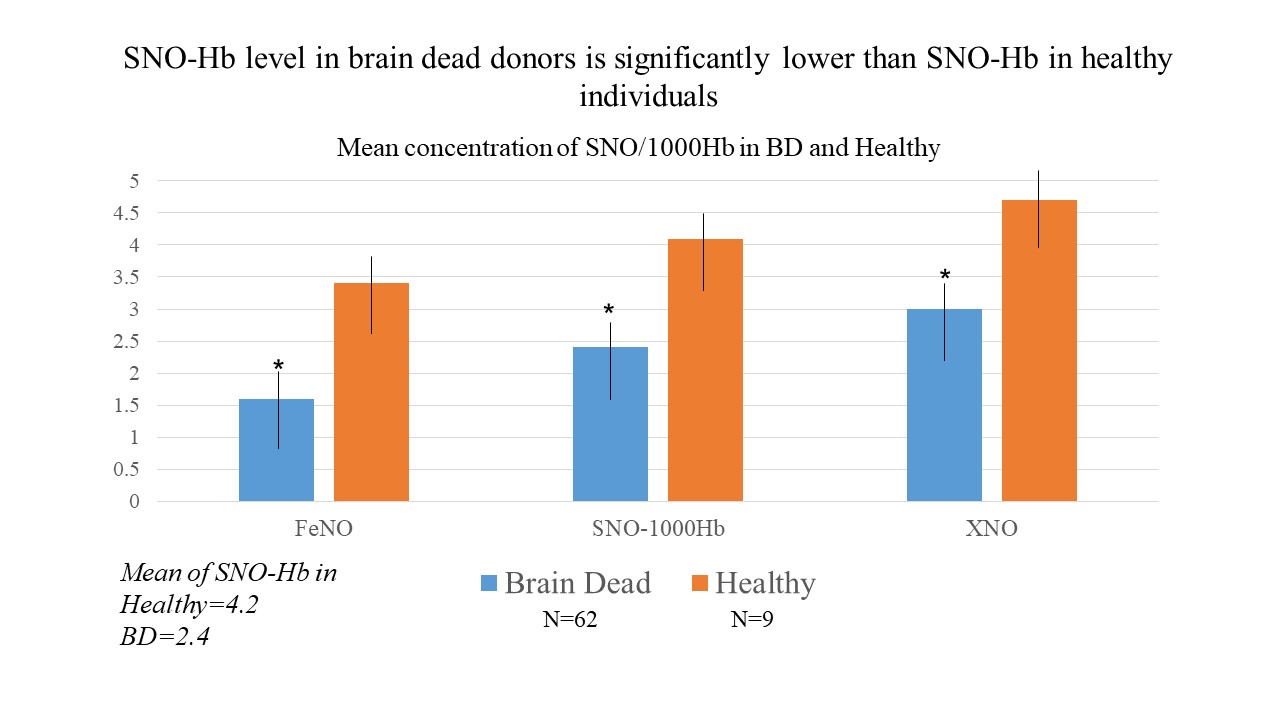A Prospective Study Comparing S-Nitrosohemoglobin in Healthy Volunteers Versus Brain Dead Organ Donors: Evaluation of a Novel Therapeutic Target to Increase VCA Availability
Mohamed Awad, MD, Cristin Coquillard, MD, Anil Manzanares, Samuel Boas, Arvin Smith, Kelsey Isbester, Corinne Wee, MD, Anand Kumar, MD.
Case Western Reserve University, Cleveland, OH, USA.
A Prospective Study Comparing S-Nitrosohemoglobin in Healthy Volunteers Versus Brain Dead Organ Donors: Evaluation of a Novel Therapeutic Target to Increase VCA Availability
Background: Brain death (BD) results in sympathetic stimulation and significant release of catecholamines (Cushing Response) that create resulting physiologic instability. BD has been postulated to disrupt regulation of local blood flow by interrupting systemic S-nitrosothiol (SNO) homeostasis. Our lab has previously demonstrated that decreased levels and/or impaired processing of S-Nitrosohemoglobin (SNO-Hb) have been observed in diseases characterized by tissue hypoxemia. We hypothesize that brain death donors have a significant decrease in SNO levels compared to healthy controls.
Methods: In prospective cohort study, we recruited two groups: healthy adult volunteer (n=9) vs adult DNC donors (n=63) provided to the research team by Lifebanc, the North East Ohio Organ Procurement Organization. Serial measurements of S-nitroso-hemoglobin (SNO-Hb) were collected during donor support phase. SNO-Hb levels were measured by mercury-coupled photolysis-chemiluminescence technique. Data analysis was doing using R statistical software.
Results: SNO-Hb levels in DNC donors (mean 2.4g/dl) was significantly lower than SNO-Hb levels in healthy individuals (mean 4.2 g/dl, p < 0.05). Total NO (XNO) and NO bound to Heme Iron (FeNO), were also significantly lower in brain death donors compared with healthy individuals.
Conclusion: Brain-death significantly disturbs SNO-Hb level. This highlights the possibility that repletion of SNO-Hb by S-nitrosylating agents may help to maintain tissue oxygenation, reduce tissue injury and organ damage in brain dead donors which may subsequently, increase the number of organs/tissue recovered for transplant.
* 
Back to 2019 Abstracts
